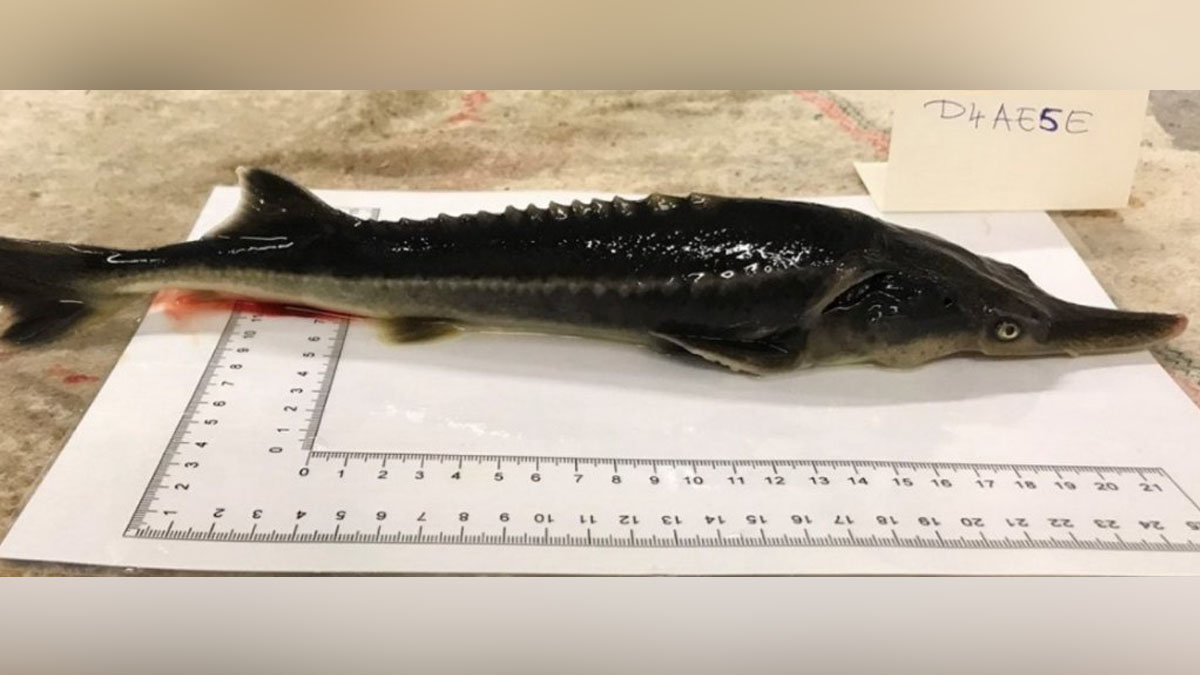
Hungarian scientists have accidentally created a new hybrid fish species named Sturddlefish- a cross between the American paddlefish and the Russian sturgeon.
Scientists from the Research Institute for Fisheries and Aquaculture, Hungary placed sperm from an American paddlefish near eggs from a Russian sturgeon in the lab.
The idea was to coax the eggs from endangered sturgeon into reproducing asexually through a process called gynogenesis, which requires the presence of sperm without the introduction of any actual DNA.
However, the process didn't go as planned and DNA was transferred unintentionally, which resulted in the creation of the entirely new hybrid fish.
It may be mentioned here that the common DNA between the two species of fish, whose eggs were taken for the process, dated back to 184 million years ago.
These odd-looking creatures are a bizarre mix of two wildly different-looking species, which might have never come into contact had humans not intervened.
While there are no plans to produce more Sturddlefish as the new hybrid fish could live up to another 100 years.
The Sturddlefish would be infertile but most hybrid species are.
Russian sturgeons are found in the floors of seas, lakes and rivers in eastern Europe, Serbia, and the Middle East.
They are not found in the United States, not even as an introduced species.
As their name implies, American paddlefish can be found in the rivers of the United States, using their unusually long, paddle-shaped snouts to dig for food in the muck.
The offspring of these two species look, if possible, even stranger than their parents.
Some half-resemble their mother and half-resemble their father, bearing classic sturgeon fins and snouts, along with typical paddlefish mouths and appetites.
Others look far more like sturgeons than paddlefish.
It might seem impossible, but as different as these fish look, they hold remarkable similarities.
Both species are known as living fossils, like crocodiles, because they have changed so little throughout their evolutionary history.
They both shared a common ancestor that lived during the age of the dinosaurs, and while that might seem like ages ago to us, for these fish that's a drop in the bucket.
"These phenomena could lead to a higher similarity, compatibility, and flexibility among the sturgeon genomes and allow the hybridisation between Russian sturgeon and American paddlefish despite the large geographical, physiological, and morphological distances," reports Science Alert quoting the authors.
The study about the new research was published in Genes.
The Story Mug, a Guwahati-based blogzine, believes in telling stories that matter.